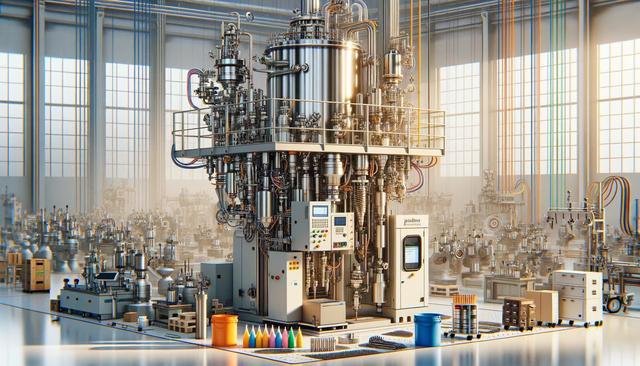Understanding the Role of Coating Machines in Surface Treatment
Coating Machine Solutions: Enhancing Surface Treatment Efficiency relies on a deep understanding of how coating systems contribute to the broader goals of surface processing. These machines are engineered to apply uniform layers of material—such as polymers, resins, or metals—onto surfaces, which is essential for enhancing adhesion, corrosion resistance, and visual appeal. Industries ranging from automotive to electronics and packaging incorporate coating machines as a core part of their manufacturing lines. This integration ensures that treated surfaces meet functional and aesthetic standards while maintaining production efficiency and quality control.
The precision offered by coating machines reduces material waste and ensures consistent layer thickness, which is often critical in applications like electronics or medical devices. By automating the process, manufacturers can also significantly reduce the risks associated with manual coating methods, such as uneven application or contamination. In high-stakes environments, where even minor defects can lead to product failure, the reliability of these machines becomes an indispensable asset.
Types of Coating Machines and Their Applications
Various types of coating machines are utilized depending on the specific requirements of the substrate and the coating material. Common machine types include:
- Roll Coaters – Ideal for flat surfaces, offering high-speed application and consistent film thickness.
- Spray Coaters – Useful for complex geometries and components with irregular shapes.
- Dip Coaters – Often used for batch processing with excellent surface coverage.
- Slot Die Coaters – Preferred in applications requiring extremely precise layer control, such as in battery or photovoltaic cell manufacturing.
Each of these machines can be tailored to meet the unique challenges of different industries. For instance, the electronics industry often requires ultra-thin coatings to protect delicate components without compromising functionality, while automotive manufacturing prioritizes durability and resistance to environmental factors.
Advances in Coating Technology Driving Efficiency
Recent developments in Coating Machine Solutions: Enhancing Surface Treatment Efficiency have led to significant improvements in both performance and sustainability. Modern machines now incorporate advanced sensors and control systems that allow real-time monitoring and adjustment of variables like temperature, viscosity, and coating speed. These innovations not only ensure product consistency but also allow for faster changeovers between production batches, reducing downtime.
Moreover, new coating technologies are increasingly focused on reducing environmental impact. Solutions such as water-based coatings and solvent recovery systems help minimize volatile organic compound (VOC) emissions. These enhancements align with global sustainability goals and regulatory compliance, making modern coating machines a responsible investment for forward-thinking companies.
The integration of machine learning algorithms is another frontier, enabling predictive maintenance and process optimization. By analyzing performance data, these systems help identify inefficiencies and potential faults before they result in costly downtime.
Challenges and Solutions in Surface Coating Processes
Despite their benefits, implementing coating machine solutions can present a range of challenges. These may include:
- Complexity in coating multiple material types.
- Maintaining uniformity on irregular surfaces.
- Managing changing environmental conditions like humidity or temperature.
- Ensuring compatibility between substrates and coating materials.
To address these challenges, modern coating systems are often equipped with adaptive controls and modular designs. This flexibility allows them to be easily adjusted for different production needs or integrated into existing manufacturing lines. Operators are also increasingly supported by user-friendly interfaces and training programs that reduce the learning curve and improve operational reliability.
Ongoing collaboration between equipment manufacturers and end-users is key to overcoming these hurdles. Customized solutions, developed through this partnership, ensure that the coating process meets specific performance and quality benchmarks.
Future Trends and Considerations for Businesses
Looking ahead, Coating Machine Solutions: Enhancing Surface Treatment Efficiency will continue to evolve alongside technological advancements and changing market demands. Key trends shaping the future include:
- Greater automation and digital integration through Industry 4.0 technologies.
- Increased demand for multi-functional coatings with properties like anti-microbial or self-healing capabilities.
- Growth in demand for lightweight and sustainable materials, requiring new coating formulations.
- Heightened focus on energy efficiency and reduced environmental impact.
For businesses considering investment in coating machinery, it is essential to evaluate current and future production needs. Factors such as scalability, ease of maintenance, and integration with existing systems should be weighed carefully. Choosing versatile equipment that can adapt to new materials and processes will provide long-term value and resilience in a rapidly evolving market.
Incorporating feedback from end-users and staying informed about industry developments will also support better decision-making and optimized performance outcomes.
Conclusion
Coating Machine Solutions: Enhancing Surface Treatment Efficiency is a concept that encapsulates the strategic role of modern coating systems in today’s manufacturing landscape. By delivering consistent, high-quality finishes and enabling greater production efficiency, these machines support a wide range of industrial applications. As technology advances and environmental considerations gain prominence, businesses that invest in adaptable and intelligent coating solutions will be better positioned to meet both operational and regulatory expectations. Ultimately, understanding the capabilities and benefits of these systems is key to leveraging them effectively in competitive and quality-driven markets.




Leave a Reply